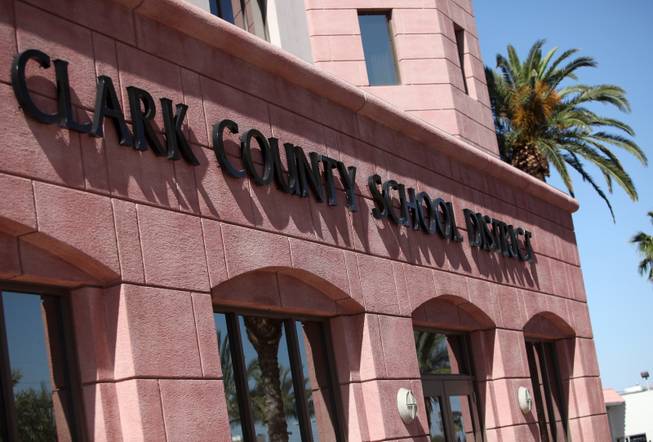
The Clark County School District offices are shown in Las Vegas in May 2009.
Monday, June 7, 2021 | 12:49 p.m.
The Clark County School District said bills recently passed by the state Legislature mark a “momentous shift” in the state’s education system.
Over four months in Carson City, lawmakers codified changes to the state’s K-12 funding formula, established a new revenue stream for K-12 education and expanded school districts’ opportunities to focus on capital improvement.
“The Nevada Legislature came together to make the students of Clark County a priority,” Clark County School Board President Linda Cavazos said.
Two bills in particular were integral to revamping K-12 funding: Senate Bill 439, which codified a new statewide funding formula, and Assembly Bill 495, which earmarked new and existing mining taxes for education.
“I thank the Nevada Legislature for prioritizing school funding, school safety, school infrastructure and student mental health throughout the session. We are thankful for the hard work of Gov. Steve Sisolak and the legislators in providing our educators with the tools and funding needed to support student achievement,” Clark County Schools Superintendent Jesus Jara said in a statement.
The new funding formula, called the Pupil-Centered Funding Plan, is the result of years of negotiations to replace the Nevada Plan, which has determined school funding allocations in Nevada for over five decades.
In the 2019 legislative session, a commission was created to determine costs associated with the Pupil-Centered Funding Plan by running it concurrently with the Nevada Plan over the two-year period between sessions.
Lawmakers adopted minor changes to the plan this year and passed it into law. The new formula changes allocations per student for English learners, at-risk students and gifted and talented students. Allocations for students with special needs will be made outside the plan.
In 2019, Nevada provided about $4,500 less in per-pupil funding than the national average in state and local dollars, according to the Education Law Center. Districts with high poverty rates got 31% less than those with low poverty rates.
The passage of a mining tax bill in the waning hours of the session earmarked additional funding for the state’s education system.
The lack of a new, dedicated funding stream in the Pupil-Centered Funding Plan had been a primary criticism by education advocates.
